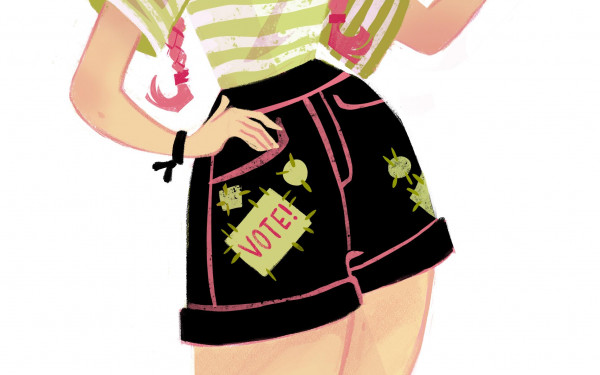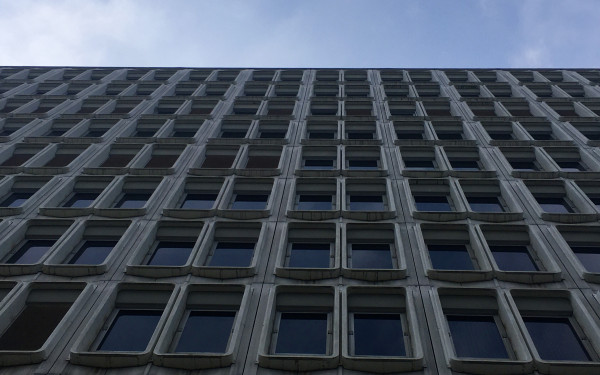Concordia Student Politics 101
Weaving Through the Branches of Concordia’s Student Government
The role of student government in our Concordia ecosystem is an area of interest that only a select few care to understand—and that’s totally reasonable.
A helpful exercise when attempting to grasp student politics is to compare it with national politics. While there is a major difference of scale and consequence between the two, some of their functions and processes are comparable.
Federal government, for instance, collects taxes from the general population, and then, in the ideal case, uses the capital to pay for programs that will benefit the people. Comparably, student government collects fee-levies from student tuition, and uses that accumulated wealth in the very same spirit as federal government—although admittedly with fewer drone strikes.
Individuals aspiring to secure leadership positions in student politics are also subjected to an election and campaign process. People vying for power turn into linguistic magicians, exercising their best rhetoric to convince the public they’re right for the job.
Often, when it’s election time for an association or for undergraduate student union, political teams—known as slates—will form, presenting students with two, mostly distinct, options. The different slates present their platforms, and students judge the viability of the promises accordingly.
It’s important to note that students vote for the individuals that make up the slate—not for the slate itself. There are also people who choose to run independently. The two slates are pitted against each other in debates, and students are given the opportunity to directly hear the candidates out. Referendums are also held during elections.
But what exactly are student associations, and who do they represent? Similarly to how a provincial or municipal government is beholden to people within a certain geographic location, student associations are beholden to students within their own faculty or department—with a department meaning specific programs—such as Liberal Arts, for example—and faculties being groups of departments which study similar subjects. For example, the Fine Arts Student Association is made up of, and represents, students studying in the various departments within the Fine Arts faculty.
Faculty associations are made up of a council of representatives, comprised of students elected to their specific department within the faculty, and an executive team, which handles the daily operations needed to keep the association afloat—such as budget creation and social event coordinating, among other things.
At the very core of a student association’s influence—aside from its spending power—is its ability to legislate. At nearly all council meetings, which usually occur on a monthly or bi-monthly basis, representatives and executives debate over and vote on motions that could range from official stances on political issues, to the allocation of funds to help finance student-run initiatives. The combination of motions plus money equals a fair amount of tangible power that student governing bodies have to influence university life.
Here are the five largest undergraduate student governing bodies.
Concordia Student Union (CSU)
The CSU is the primary and most influential student governing body at Concordia, representing all 30,000 undergraduate students. The fee-levy is set at $3.80 per credit, and goes towards funding numerous services and initiatives across campus that many people benefit from. These include but are not limited to: the Student Advocacy Centre, the Housing and Job Bank, The Legal Information Clinic, an upcoming student daycare service, and upcoming student housing units. The CSU also funded the Reggie’s renovations, the Frigo Vert relocation, and, once upon a time, Burritoville. The union has also taken political stances—known formally as “positions”—on a range of issues. Some of these include: austerity, divestment from fossil fuels, climate justice, indigenous sovereignty, and anti-consumerism, among others.
The CSU is comprised of eight executives, 14 Arts and Science councillors, six John Molson School of Business councillors, four Engineering and Computer Science councillors, three Fine Arts councillors, and three independent councillors.
General Coordinator (i.e. President): Lucinda Kiparissis
Commerce and Administration Student Association (CASA-JMSB)
CASA represents a mass of 7,058 snazzily dressed undergraduate students from Concordia’s business programs. The students pay a fee-levy of $3.00 per credit to their association. There are six individual associations within CASA: Finance and Investment, Accounting, Human Resources, Marketing, International Business, and Supply Chain and Business Technology. There are also eight committees in CASA dealing with a variety of different business related interests, like sports management, and sustainable enterprise, among others. And, of course, there is an executive team overseeing the broader operations.
The association was criticized in a letter to The Link last year for overspending on a simulated stock exchange event called JMSX, and former CASA presidential candidate Karl Guiragossian also raised budgetary concerns during the debates. Despite this issue, the association has run a few consecutive surpluses, which means budget cuts.
President: Evan Pitchie
Arts and Science Federation of Associations (ASFA)
With nearly 15,000 arts and science students, ASFA represents the second largest number of undergraduates here at Concordia. Arts and science students fork over $1.22 per credit to fund the federation’s operations. It’s important to note that ASFA is made up of a large variety of smaller department-specific member associations from within the arts and science umbrella—hence why is is called a federation of associations. Council is made up of representatives from many—although not all—departments, as well as an executive team.
ASFA is no stranger to controversy. In 2015, The Montreal Gazette broke a story concerning the racial and sexual harassment of a student politician who went by the pseudonym “Mei Ling,” which ultimately resulted in a settlement from the federation to pay for damages. It also lead to an uptick in proactivity from ASFA to deal with issues of racism and sexism in their organization. Because of these issues, and more, ASFA has been commonly referred to over the past couple of years as a “mess.”
General Coordinator (i.e. President): Andrea Krasznai
Fine Arts Student Alliance (FASA)
This association represents approximately 3,500 students at Concordia. Running the show are seven coordinators and a board of directors who keep the organization in operation.
FASA earned its reputation for political activism during the 2015 winter semester, when they became the only association to approve and enforce a strike mandate for two separate days against government austerity measures.
General Coordinator (i.e. President): Antoine Rail
Engineering and Computer Science Association (ECA)
The ECA represents 3,250 of the more scientifically-minded at our university. Their council is made up of eight executives, four department representatives, and four independent representatives. There are 17 societies within the ECA that provide students with varied opportunities to explore their crafts head-on. This association holds over 20 competitions, and even has a compilation of past exams on their website.
President: Arravein Ponnudurai


_600_832_s.png)




__600_375_90_s_c1.jpg)